Why riding a Harley Davidson is different
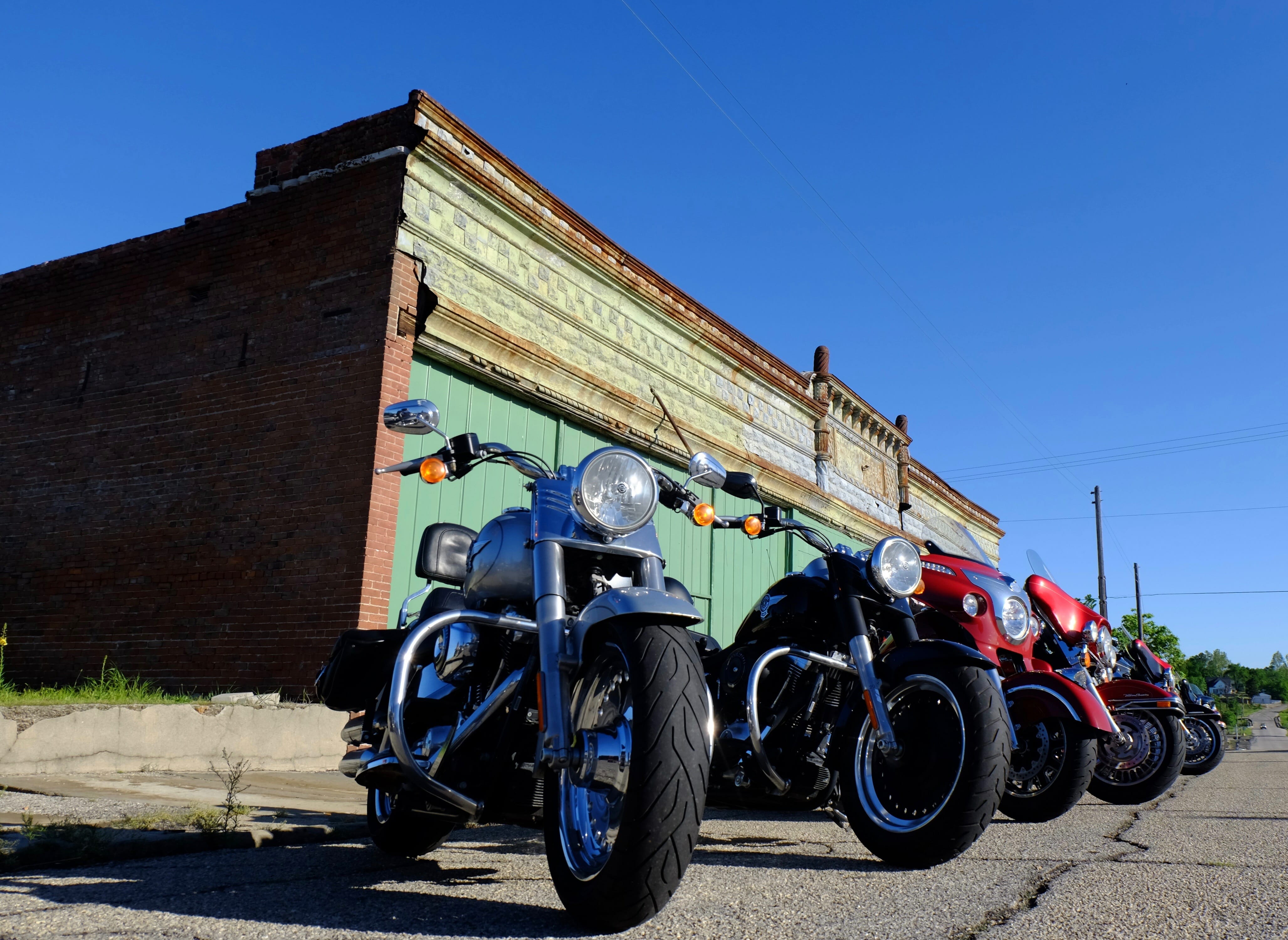
Harley may be big bikes, but they’re easy to control if you’re confident
(If you’re interested in hiring a motorcycle for touring in the USA, please contact us. We’re an official EagleRider tour operator with the most competitive pricing on rentals, guided and self guided tours, and we’d be happy to help you plan your trip – to contact us, please click here.)
Hardcore Harley Davidson riders are adamant that their bike is different than any other motorcycle on the road. If you cast aside the brand identity, is there any real truth to that? Are the actual dynamics of riding the bike truly different than any other motorcycle? In a word, yes. If you’ve never ridden a Harley before, you may be in for a shock the first time you saddle up. Even riders with lots of experience on cruiser style motorcycles have an acclimation period with a Harley.
First off (and this applies to almost all cruiser-style motorcycles, really), you’ve got far less ground clearance than a typical sports, adventure or sports touring motorcycle. Cruisers sit closer to the ground, and Harley tourers like the Road King and Electra Glide have floorboards, which stick out far further than a footpeg for instance. This means that you’ve got to be cautious at first, and feel out the limit in corners. The floorboards are hinged and will come up a bit as they scrape, so the sound and the sparks provide a warning. The exhaust pipes hang very low on these bikes and are the next thing to ground out, which can lever the bike off the road – so pay attention to your floorboards.
The big touring Harleys have a heel & toe shifter for changing gears. If you’ve not ridden with this setup before, it can be a bit odd getting used to downshifting by stamping your heel. Also, riders with big feet can find the space between the levers a bit cramped. After years of riding sports motorcycles, I found the heel & toe system to be a bother, so I removed the heel portion, raised the toe shifter a 1/2 inch so I could get my boot under it, and shift normally – toe up, toe down. This is a very easy change that can be done with an Allen wrench (although you’re NOT allowed to modify rental bikes.)
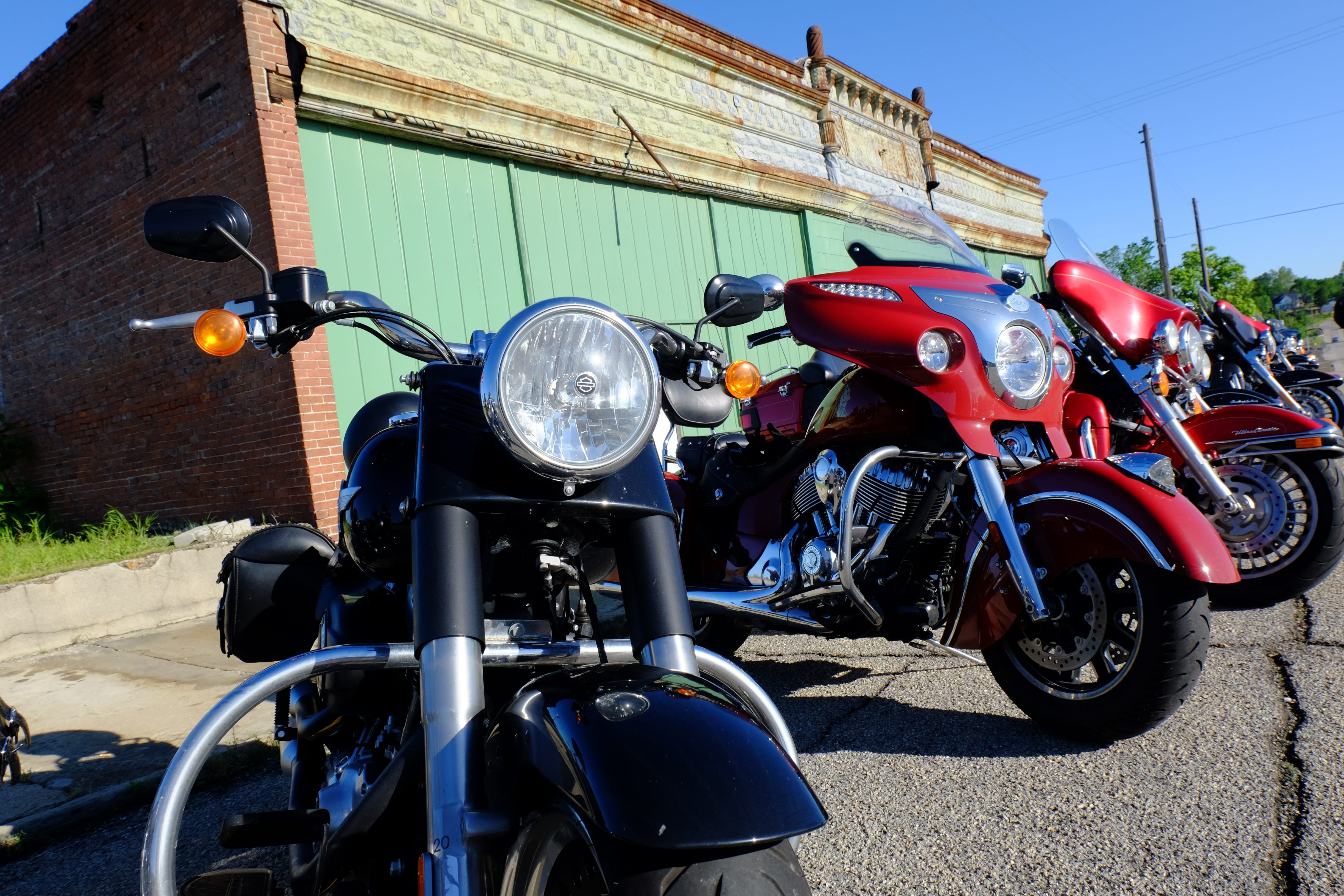
In our opinion, a touring Harley is the best bike for long distance touring in America
Very important on any modern fuel injected Harley is to follow the proper starting procedure, and wait until the engine light goes off before firing the ignition. The engine light remains illuminated while the fuel injection is priming, and if you fire the bike before it is completed, it can run rough. So watch for the engine light to go out, then press start. It is critical.
Another thing that is totally different about riding a Harley: you’ll use the back brake, often. In fact, in stop & go traffic and at low speeds on rough roads, I use the back brake more than the front. The Harley back brake is not as powerful as that on a typical sportsbike; plus, a Harley tourer weighs a lot more. Consequently, it’s a lot easier to use the back brake on an HD without locking it up (unless you stamp on it in a panic of course). The long, heavy and low posture of a big cruiser requires that you balance the brakes when you’re stopping. The forks on a Harley are typical sprung very softly, so when you grab a handful of front brake, the nose of the bike dives dramatically as the weight of the bike transfers, far moreso than on a typical sportsbike. On slippery surfaces, this can cause a crash. You have to use the back brake to balance the weight transfer on a big cruiser.
Using the back brake can be counter-intuitive to anyone who primarily rides sportsbikes. I remember being pulled off the track by a California Superbike School instructor (superb riding school, btw) during a session because he saw me use the back brake, and wanted me to explain why (I was using it to settle the rear suspension in some corners.) Keith Code in fact was adamant that you should use the front brake almost exclusively, not only on the track but the street as well. But IMHO, this just doesn’t work as well on cruisers with stock suspension. The good news is: it only takes a short while in the saddle of a Harley to get used to using the back brake, and then you don’t think about it.
You’ll also need to adapt to the slower handling on a Harley, and slower speeds in general….in fact, most things happen more slowly on a Harley Davidson. You don’t throw the bike into a corner, you roll it in. You don’t twist the throttle to the stop, you ride the wave of torque, and short shift the bike to accelerate quickly. You don’t grab a handful of brake lever just before you turn into a corner, you trail brake and roll thru. Somehow, on wide American roads, this all seems to make sense. You keep the revs at around 2800, maybe 3200 if you’re going to pass someone and want to get good pull as you accelerate. If you rented the bike, you’re probably on vacation anyway, so what’s the point of rushing?
The last thing about a Harley that really makes it different is the sweet scent of burning licorice…ok, oil….that wafts from the air filter. If you’re close behind another bike, or sitting in heavy traffic, you’ll smell it for sure. We’ll see riders pull over, get on their bellies on the ground to check for leaks, but there never are any. 99% of the time, it’s residual oil in the air intake on the right side of the motor. It’s true that you’ll probably never smell oil riding a Honda, but for some reason on a Harley the scent is almost…welcome. Hence the phrase, “that’s not oil you smell, it’s character!”
Between the two of us, Tim and I have owned or ridden nearly almost every style and brand of motorcycle, and given a choice when touring America, we’d pick a Harley every time (the Road King is Tim’s favorite, mine’s the Electra Glide). Of course, variety is the spice of life, and we’ve had customers rent Hondas (Goldwings) and BMW’s (1200 GS) on tours too. We’ve also ridden a Triumph Bonneville on our 2011 cross country tour, which we loved.
Hope this was helpful to you –
Best,
Jim McDermott
Why riding a Harley Davidson is different
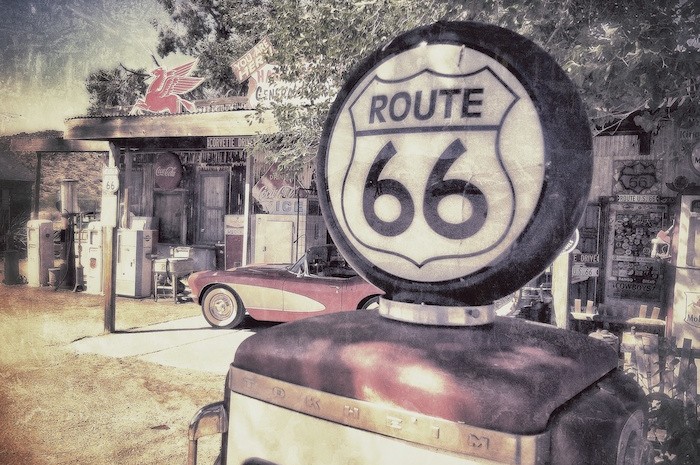
Guided Trips Route 66 Motorcycle Tour
[/one_fourth] [one_fourth]
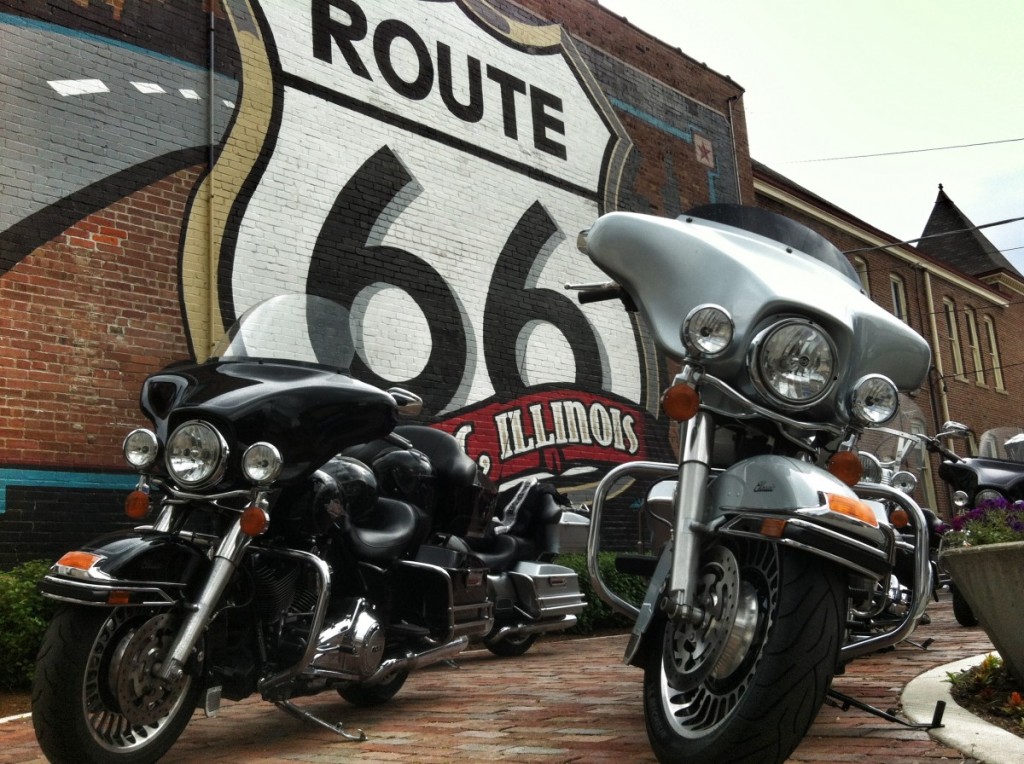
Guided Trips Route 66 8 Day Guided Tour
[/one_fourth] [one_fourth]

Guided Trips Pacific Coast Tour™
[/one_fourth][one_fourth_last]
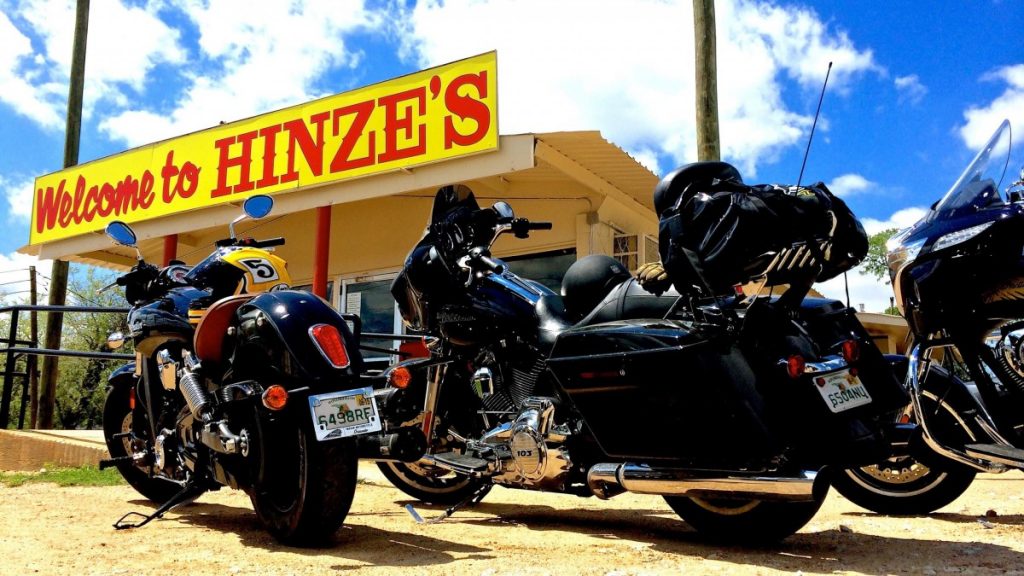
Guided Trips Triple B – Blues, Bourbon, BBQ
[/one_fourth_last]
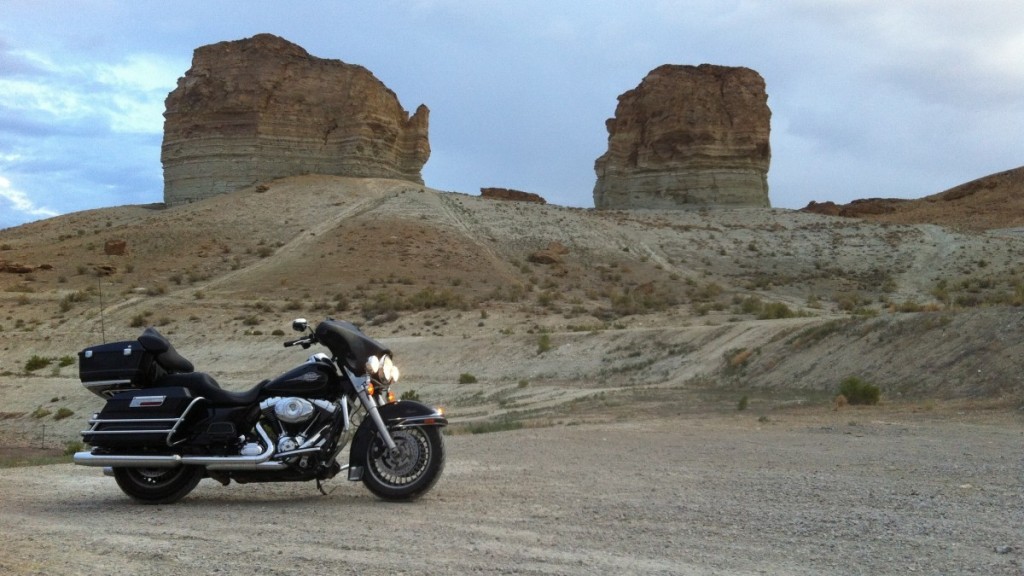
Guided Trips Wild West Guided Tour (I & II Combined)
[/one_fourth] [one_fourth]
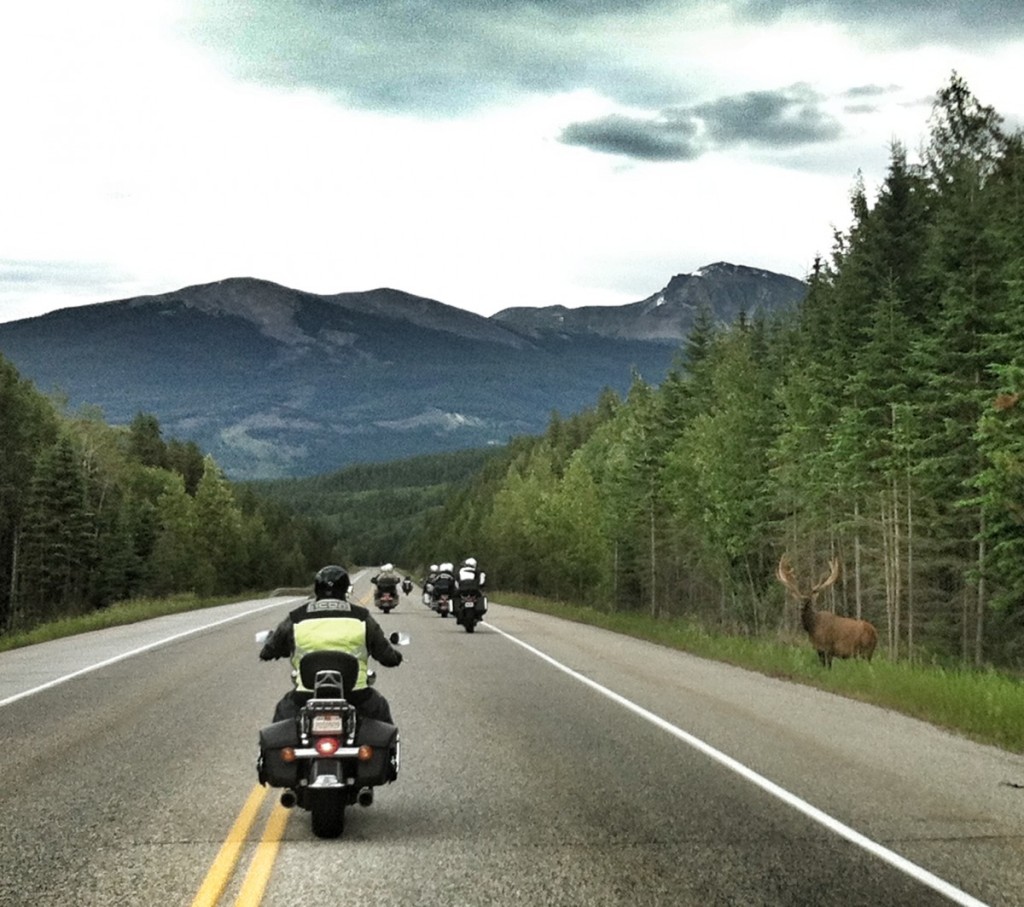
Guided Trips Canada & Yellowstone Guided Tour
[/one_fourth] [one_fourth]
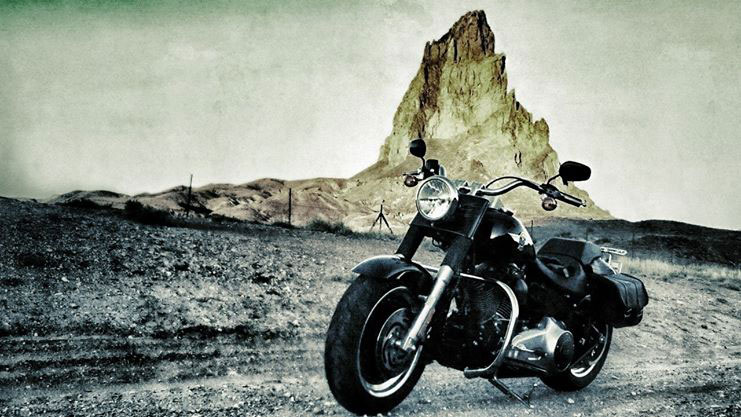
Guided Trips Wild West Part I Guided Tour
[/one_fourth][one_fourth_last]
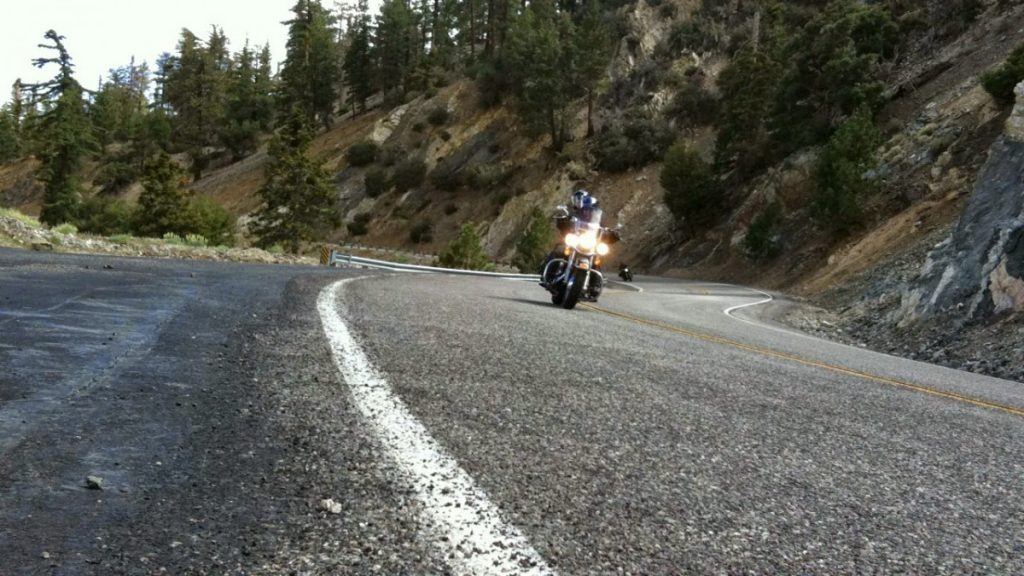
Guided Trips Wild West Part II Guided Tour
[/one_fourth_last]
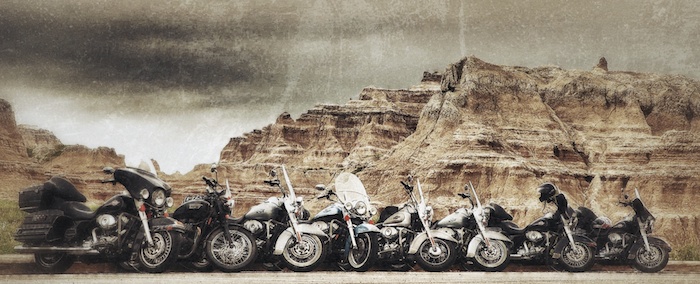
Guided Trips Sturgis Bike Week Motorcycle Tour
[/one_fourth][one_fourth]
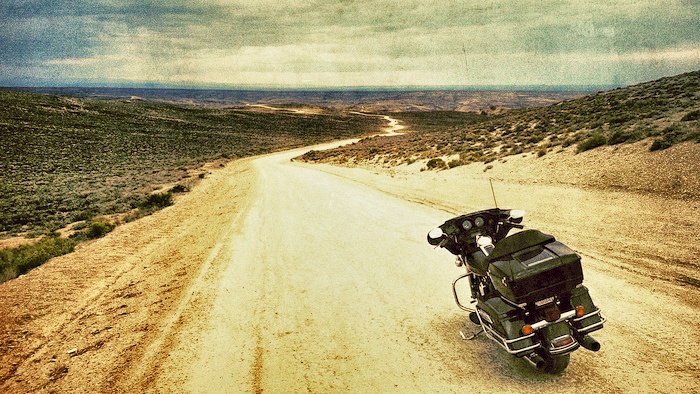
Guided Trips Baja California Motorcycle Tour
[/one_fourth][one_fourth][/one_fourth][one_fourth_last][/one_fourth_last]

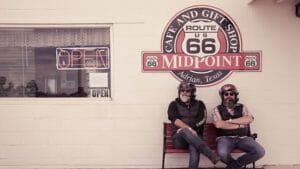
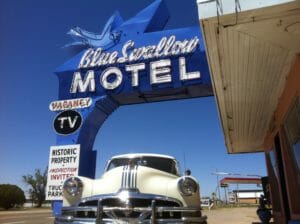
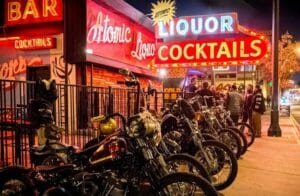
I think he meant downshifting with your toe or ball of foot. Not your heel.
Gnrinva;
Actually, I did mean heel. The Harley touring bikes like the Electra Glide and Road King have what is called a “heel & toe” shifter, which is a two part lever with a pivot in the middle. You are supposed to upshift by stepping on the lever behind your heel, and downshift by clicking the lever in front of your tow. This is a vintage style Harley setup, but I personally don’t like it as you cannot shift precisely. Therefore on my own bike, I remove the heel lever (easy to do) and shift up and down with my toe, just like most modern bikes.
Of course, you’re not supposed to do anything mechanical to a rental bike, it violates the rental agreement terms. For someone who hasn’t ridden with a heel/toe setup, it can be odd at first; you can get used to it of course.
Thanks for your post!
Jim
No he ment what he said. Harleys come setup with a toe and heel shifter. Toe is for down shifts and heal is for up shifts.I also removed my heal shifter, just couldn’t get use to it.
I’ve seen this heel & toe shifter on a 70 cc bike from a friend, and I’m renting a bike this spring, it is a HD Sportster 883. I’m afraid of this setup, does this bike have a heel & toe shifter too?
Hey Du;
Not to worry, the Sportster has a standard toe shifter, it does not have heel & toe.
Almost all the big Harleys I’ve seen, seem to have a rough idle note, like “potato-potato”, yet my Suzuki C90 has that constant and satisfying “doof-doof”. Why’s that?
Hey Len – this is the reason why (from Wikipedia):
“The classic Harley-Davidson engines are V-twin engines, each with a 45° angle between the cylinders. The crankshaft has a single pin, and both pistons are connected to this pin through their connecting rods.[6]
This 45° angle is covered under several United States patents and is an engineering tradeoff that allows a large, high-torque engine in a relatively small space. It causes the cylinders to fire at uneven intervals and produces the choppy “potato-potato” sound so strongly linked to the Harley-Davidson brand.
To simplify the engine and reduce costs, the V-twin ignition was designed to operate with a single set of points and no distributor. This is known as a dual fire ignition system, causing both spark plugs to fire regardless of which cylinder was on its compression stroke, with the other spark plug firing on its cylinder’s exhaust stroke, effectively “wasting a spark”. The exhaust note is basically a throaty growling sound with some popping. The 45° design of the engine thus creates a plug firing sequencing as such: The first cylinder fires, the second (rear) cylinder fires 315° later, then there is a 405° gap until the first cylinder fires again, giving the engine its unique sound.”
Jim,
Good article. Having ridden sports bikes all my life I was converted to Harleys whilst living in Texas by my friends who all ride Harleys. Being a Scot who is now back in the UK I never got Harleys till I lived in Texas. I traded a 996 for a Fat Bob which now lives in my garage in Somerset and I drive mostly around the West Country on it. Harleys are most defiantly different and in a good way. I can related to everything you have said here and even though I had ridden a few thousand miles in the US on my Harley I still had a bit of a bedding in period on the narrow twisty roads in the UK but as you say taking a bit more time getting from A to B is kinda what riding a bike should be about.
Jim
Cheers Jim, glad you liked the article. I find that most people who slag off Harleys have never ridden one, certainly not for long distances. But it is true they seem to work best in America, especially out West. They don’t seem to like the damp weather much, shame Harley uses such cheap fasteners on the bikes, they oxidize at the first hint of moisture. Fat Bob’s a lovely bike, ride it happily and safely!
Best,
Jim
Hi Jim,
good piece and pretty accurate!!
I currently ride a BMW R1200RT, clocking about 15000 miles a year in all the glorious weather that England has to offer (except the snow, i draw the line there!)
My wife and I did a Califonia tour last year and opted for the Road King about which we had heard good reports. IMHO the BMW knocks the HD in to a cocked hat in pretty much all areas. However despite that once i got used to the heavier steering, firm rear suspension, and overall generally lower speed, i wouldn’t have swapped it for the world, and we thoroughly enjoyed it the ride.
The sensation of cruising through the Sierra mountains, across the Golden Gate into San Francisco, along the Big Sur or down Mulholland Drive to the Rockstore should really only ever be done on a big Harley. It’s probably one of the coolest things i’ve ever done and why would anyone want to go to America and do all that on anything but a Harley.
ps. i actually loved the heel shift and the raised pegs once i get into them
Thanks Dave. Yeah we pretty much feel the same way, for touring in America, we like Harleys. Now mind you, if we were doing a two week tour of the Alps, or riding in Africa, we wouldn’t be on Road Kings 🙂
Best,
Jim McDermott
With reference to toe ‘n’ heel gearchange, did Route 66 this August, first time riding a “big” bike. Tried toe ‘n’ heel on second day and used it for rest of trip. Much quicker changing up and the best way to find neutral on a Heritage Softail. Loved it. P.S. Anyone thinking of touring in America on anything other than a Harley Davidson is completely missing the point.
Thanks for the post Stuart, and we agree, for touring America a Harley is the way to go. The heel and toe can be a bit of a pain if you have shorter legs, as you have to keep your foot in front of the heel pin. But it is kind of cool stomping on the heel shifter to change up, a very vintage, intentional kind of action that connects you with the machine in a unique way. Again, part of the charm of Harleys……..
Best,
Jim
Loved your article, Jim !
I had many different bikes the last 40 years, commuting every day in Belgium and Holland and for holiday trips in Europe. Always used a BMW for the foul weather days because it’s easy to clean but since I bought the FLHT in 2001 it’s by far my favourite bike. Apart from a broken belt and a new battery it never had repairs during the 81000 km’s. IMHO other bikes may ride “better”, have stiffer framework and better acceleration but the Harley is more fun, doing the things far less stressed. It’s not as fast in mph, it’s faster in miles per DAY, as the support of the wide seat keeps you going all day without saddle pain, like a trucker. I only wish it had ABS and they had a solution for these damp instruments… Enjoy your ride !
Thanks Marc – Tim and I are big Harley fans, with lots of miles on mostly the touring models, which we like the best. There’s something about the road feel you get from them that is unique, and you’re absolutely right about the amount of miles per day on them. We did our first large group coast to coast ride on Harleys, I had an Electra Glide and absolutely loved it. Ride safe! Jim
Hi really looking forward to our trip in March . So now the pre trip thinking lol . Being used to the GIVI luggage system on the Honda black bird of two 45 litres panniers and the I think 65 litre top box all which snap on and off the bike. How does the Electra glide compare? do we need inner bags should the luggage system be fixed to the bike ? and any idea of the capacity? Just wondering what it will be sensible to take.
Hey Keith;
The EG can swallow a lot of luggage – 4.52 cubic feet exactly. You obviously can’t snap off the top case, the panniers detach easily but have no handles. I find that inner bags take up a lot of space especially if they aren’t made specifically for the model you’re riding. I’d pack fairly minimally, and buy stuff on the road as need. You’ll be in America, land of shopping malls! I’d stop by a Harley dealer and have a look see at the hard bags to get a sense of space before you go. And give this article a read: https://www.thelostadventure.com/how-to-pack-for-a-motorcycle-tour
Hope that helps!
Jim
Cheers Jim according to the web there are 28.3 litres in a cubic foot so that makes it 127 litres, more than enough space for a tooth brush!
Is the Electra glide suitable for a magnetic tank bag?
It’s got a steel tank so we’d say yes, Keith.
I was wondering where the speedometer was located as I have seen them on the tank with some harleys.
Keith depends on the model – all the batwing bikes have them in the fairing, most of the others are part of the tank.
Jim
Cheers are we likely to be riding a batwing?
On this particular hire special, the bikes will be mostly Street Glides, Heritage Softails, and Electra Glides – probably a 50/50 chance of a batwing Keith.
Hoping to hire a road king for my cross country ride. I have been riding almost 50 miles nearly everyday for 3 years however its only been on either a 650 naked or a 750 sports tourer. Before that I spent 5 years on smaller 125’s. Consequently I’m very nervous of a bigger Harley do I have much to worry about?
Hi Joe
It doesn’t sound like you have anything to worry about. At stand still a big Harley will feel a lot heavier than your 650 or 750 but they carry the weight very low. Once you get rolling the weight is not so noticeable. If you would like a quote on your rental please feel free to send me the dates at [email protected] I should be able to get you good price n a Cross Country rental.
Cheers
Tim
You ride a Harley for the pride of America doing something right. When your on a Harley your never lost you just don’t really care where you are. It’s all about the ride.
Thanks, Bill McCartney
Is it true if you’re from the east and you travel out west a lot of harley dealerships won’t work on your bike? If so why is that?
Simply put Russ, No, Not true.
Most honest and informative article I have ever read about Harleys and you managed to intrigue me with the idea of a long trip on one. Congrats!
Glad you liked it David. Let us know how you get on.
I’ve ridden harleys for many years and agree about the gear shift. I’ve never altered mine I just change gear up and down with my toe